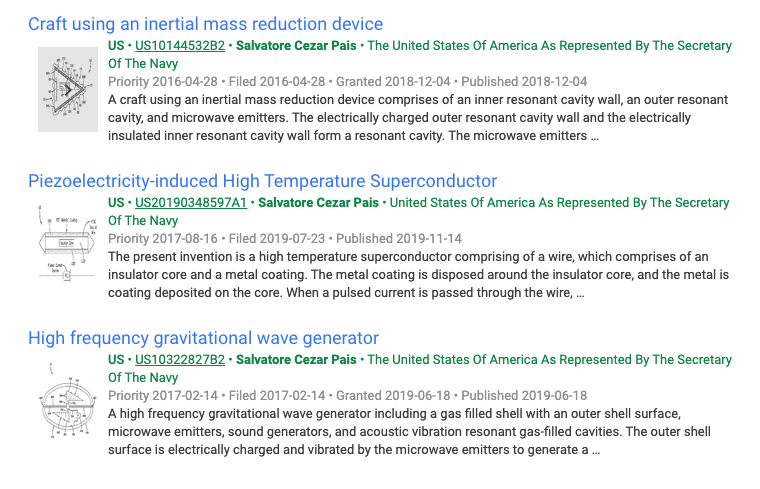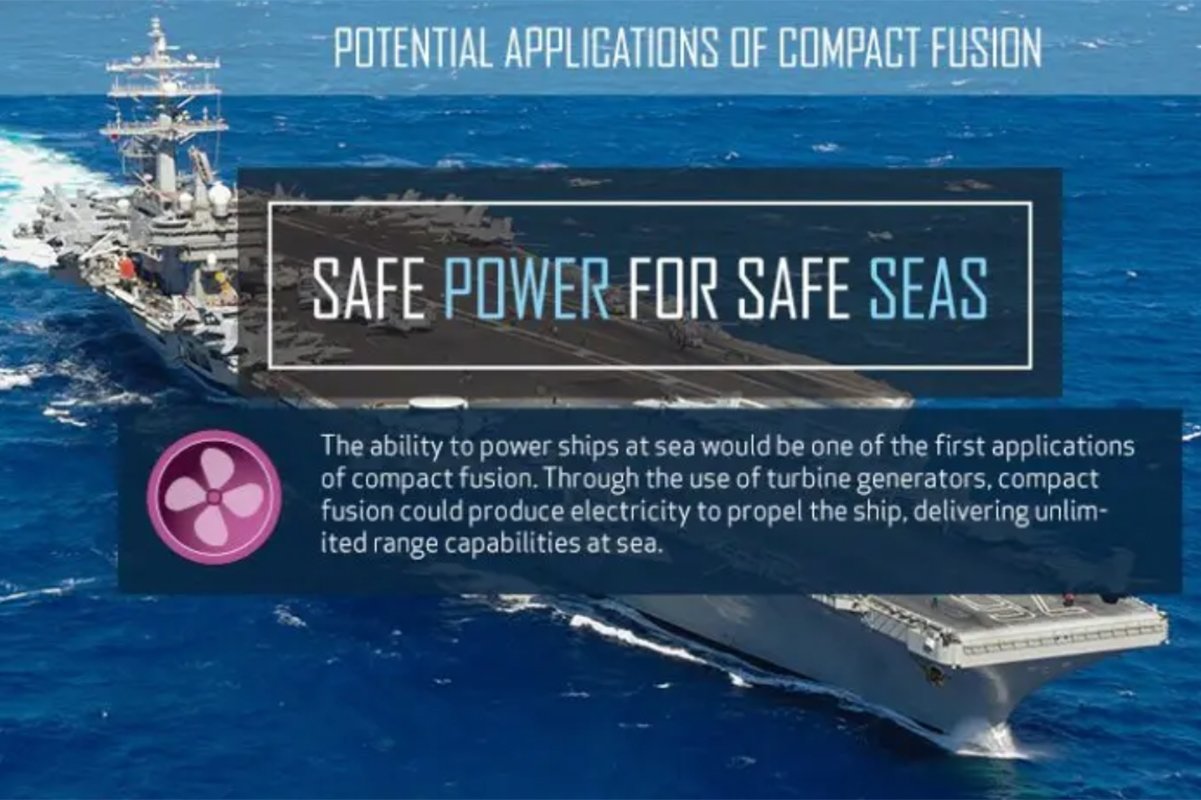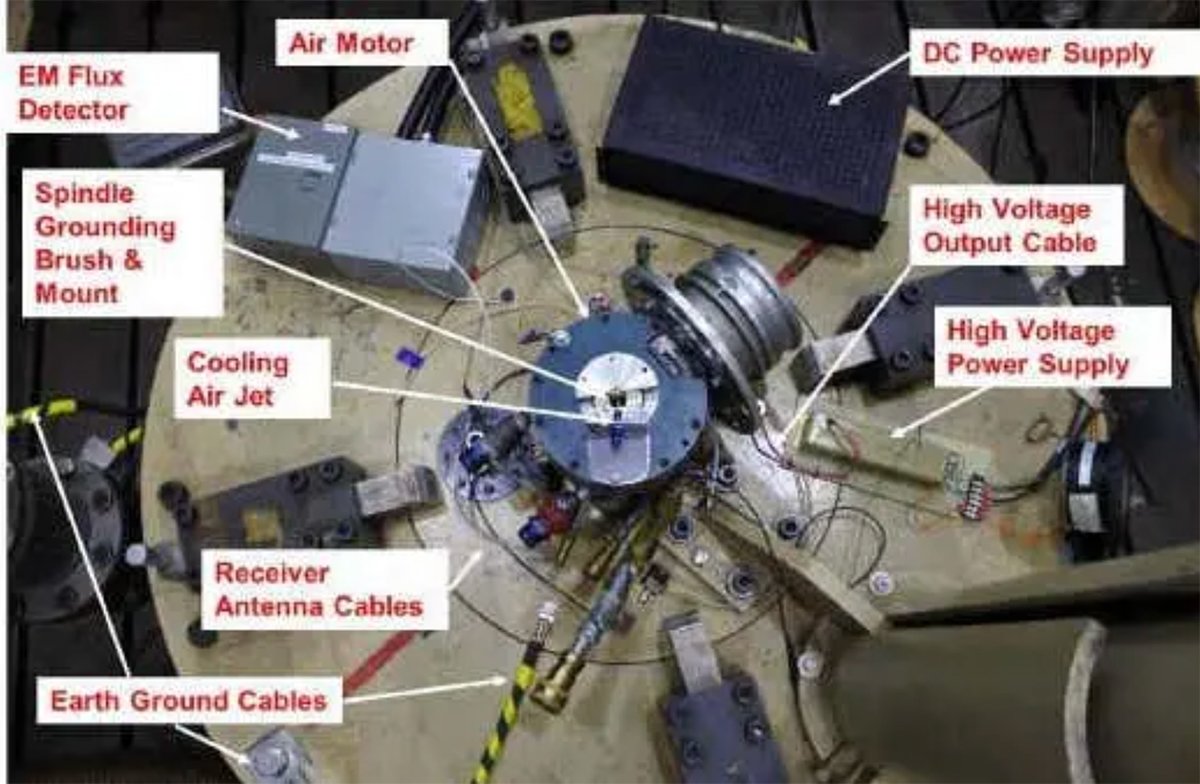
Fusion weapons could more closely resemble something from a Star Wars movie than currently existing nuclear weapons. Composite by Coffee or Die Magazine.
In 2019, the U.S. Navy’s Naval Air Warfare Center Aircraft Division (NAWCAD) filed a number of seemingly out-of-this-world patents that could, in theory, revolutionize not only military aviation, but just about everything. Chief among these strange new inventions is a High Energy Electromagnetic Field Generator, which if functional, could produce massive amounts of power with far-reaching military and commercial implications. Interestingly, the patent also closely resembles longstanding theories posited by UFO researchers about the means of propulsion seemingly employed by alien visitors to our world.
If you think this story is crazy, you ain’t seen nothin’ yet.

Back in January, Brett Tingley over at The Warzone received a fresh dump of documents pertaining to these patents through a Freedom of Information Act request. The Warzone has been leading the charge on analysis on these unusual patents ever since they surfaced over two years ago, and are continuing the effort by pouring through hundreds of pages of reports, technical drawings, data, and photographs released to them by the Navy.
Believe it or not, an electromagnetic propulsion system that could allow the Navy to build its own flying saucers may not be the craziest thing to come out of these efforts. According to these documents, another branch of this work deals with the concept of a compact fusion reactor, which among other things, could allow for the creation of a “Spacetime Modification Weapon.”
Per the Navy’s own internal documents, this weapon could “make the Hydrogen bomb seem more like a firecracker, in comparison.”
These patents were born out of the work of U.S. Navy aerospace engineer Dr. Salvatore Pais, and as crazy as his inventions may sound to us, the Navy clearly seems to think there may be something to them. So far, it’s been confirmed that the Navy has poured more than $466,000 into helping this program mature since 2017. Pais has been credited alone for three patents, each of which reads like something you might hear Geordi LaForge and his android friend Data discussing on the bridge of the Federation’s Enterprise, rather than the U.S. Navy’s.

If the mind-boggling scope of this work hasn’t quite set it for you yet, here’s how a Navy PowerPoint slide labeled “For Internal Use Only” explains the implications of Dr. Pais’ technology, of course, assuming it works:

If for some reason this slide is loading properly for you, here’s the third bullet point regarding a Spacetime Modification Weapon typed out:
“Under uniquely defined conditions, the Plasma Compression Fusion Device can lead to development of a Spacetime Modification Weapon (SMW- a weapon that can make the Hydrogen bomb seem more like a firecracker, in comparison). Extremely high energy levels can be achieved with this invention, under pulsed ultrahigh current (I) / ultrahigh magnetic flux density (B) conditions (Z-pinch with a Fusion twist).“
So what exactly is this new technology, and more importantly… is it real? That’s where this story gets even more complicated (if the phrase “Z-pinch with a Fusion twist” wasn’t already complicated enough).
A compact fusion reactor has long been the holy grail of energy scientists and researchers, and to be clear Pais isn’t the first person to suggest that he’s close to pulling it off. Back in 2018, a year before the Navy’s patent, Lockheed Martin filed a patent for part of a fusion reaction confinement system that was, according to their documents, part of a compact fusion reactor that would be small enough to be “housed within the fuselage of an F-16 fighter jet.” You can read my full breakdown on that patent here.
A working fusion reactor would be a fundamentally different means of power production than the fission reactors found in nuclear power plants today. Technically speaking, fusion reactors do already exist, but they’ve never been efficient enough here on earth to actually be used for power production (though in September, a team at MIT successfully produced excess power with their fusion reactor for the first time ever).

While nuclear reactors in everything from power plants to aircraft carriers produce power by splitting a nucleus into two lighter nuclei (splitting the atom), fusion power would involve fusing two or more nuclei together into a single, heavier element–most likely, hydrogen atoms being fused into a single helium one.
In theory, an efficient fusion reactor could effectively end humanity’s reliance on fossil fuels, so while one potential application for this technology could be the most powerful weapon mankind has ever conceived, that same technology could feasibly nip many potential conflicts in the bud… After all, a great deal of warfare can be, at its most basic levels, attributed to a competition for resources. With nearly limitless power through fusion, there’d be a lot less competition required.
Importantly, fusion power could also be much safer than the fission means of power production we’re familiar with. While it’s a common misconception that nuclear power plants can “explode” during a meltdown like a nuclear weapon, the fallout that results from such a meltdown is still incredibly severe, as we’ve seen in places like Chernobyl and Fukushima. These runaway chain reactions produce a massive amount of radiation. Fusion, on the other hand, isn’t susceptible to this runaway effect–and even better–it also doesn’t produce nuclear waste as a byproduct.
According to Lockheed Martin’s estimates at the time, their compact fusion reactor could produce a constant supply of 100 megawatts of power, enough to run an entire aircraft carrier or power the homes of nearly 100,000 people, using only about 25 pounds of hydrogen isotopes, deuterium, and tritium. Not bad for something you could stick in the nose of an F-16.
This brings us back to the perhaps-less-crazy-sounding-now work of Dr. Salvatore Cezar Pais, who seems to be hot on the same trail Lockheed Martin’s team is regarding fusion power, and may have also unlocked the secrets to an exotic new means of propulsion and world-ending new weapon along the way.

Worryingly, Chief Technology Officer of the U.S. Naval Aviation Enterprise Dr. James Sheehy has gone on record as saying that this technology may be a further reach than our current means can manage, but America isn’t the only dog in this fight.
“China is already investing significantly in this area,” Sheely told Patent Examiner Philip Bonzell, and “would prefer we [the U.S.] hold the patent as opposed to paying forever more to use this revolutionary technology” as he asserts “this will become a reality.” — The Warzone
At this point, it’s impossible to say whether or not the Navy and Dr. Pais have managed to produce anything truly groundbreaking through their research, and indeed the recent document dump does show, at least as of when these documents were produced, that they have yet to prove or disprove the premise behind his High Energy Electromagnetic Field Generator (HEEMFG) in their experiments to date.
For now, it seems a sure thing that research into the Spacetime Modification Weapon will continue–but there is one thing we already know for sure: If and when this technology does come to fruition, it could be used to fundamentally change practically everything in our world today… or potentially, just to blow it all up.
This article was originally published Dec. 13, 2021 on Sandboxx News. Follow Sandboxx News on Instagram.
Read Next: DARPA and NASA Scientists Accidentally Create Warp Bubble For Interstellar Travel

Mac Caltrider is a senior staff writer for Coffee or Die Magazine. He served in the US Marine Corps and is a former police officer. Caltrider earned his bachelor’s degree in history and now reads anything he can get his hands on. He is also the creator of Pipes & Pages, a site intended to increase readership among enlisted troops. Caltrider spends most of his time reading, writing, and waging a one-man war against premature hair loss.
BRCC and Bad Moon Print Press team up for an exclusive, limited-edition T-shirt design!
BRCC partners with Team Room Design for an exclusive T-shirt release!
Thirty Seconds Out has partnered with BRCC for an exclusive shirt design invoking the God of Winter.
Lucas O'Hara of Grizzly Forge has teamed up with BRCC for a badass, exclusive Shirt Club T-shirt design featuring his most popular knife and tiomahawk.
Coffee or Die sits down with one of the graphic designers behind Black Rifle Coffee's signature look and vibe.
Biden will award the Medal of Honor to a Vietnam War Army helicopter pilot who risked his life to save a reconnaissance team from almost certain death.
Ever wonder how much Jack Mandaville would f*ck sh*t up if he went back in time? The American Revolution didn't even see him coming.
A nearly 200-year-old West Point time capsule that at first appeared to yield little more than dust contains hidden treasure, the US Military Academy said.












